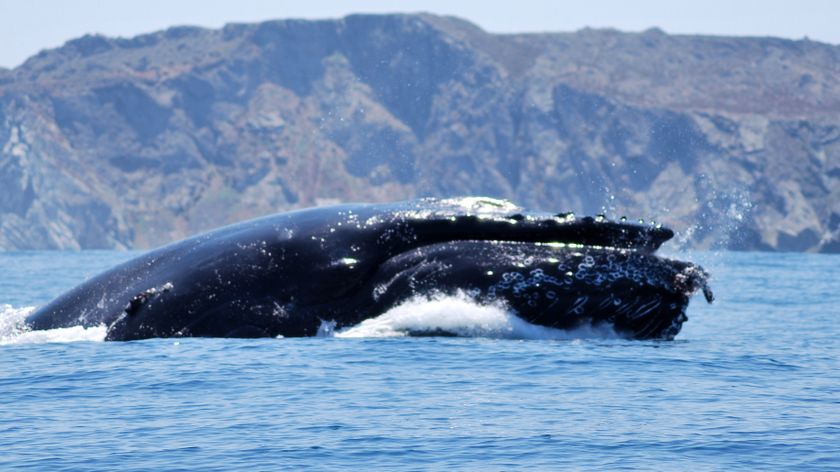Why Women and Whales Share a Rich Post-Breeding Life
Women who have gone through menopause are not alone in living far past their ability to reproduce. This trait also been documented among killer whales and pilot whales.
A new demographic model offers an explanation for why these whales and humans share this unusual characteristic: They live in family groups, and, over time, females develop an increasing stake in helping raise the offspring of others in their community.
The work, the latest collaboration by a pair of scientists in England, provides a supplemental explanation to the grandmother hypothesis, which suggests that evolution favored older women who used their knowledge and experience to benefit their relatives' children.
The reasoning behind the grandmother hypothesis isn't foolproof, said Michael Cant, an evolutionary biologist at the University of Exeter, who teamed up with University of Cambridge behavioral ecologist Rufus Johnstone. "It's always better to reproduce offspring yourself in evolutionary terms," Cant said.
But once a female has offspring and those offspring have bred their own, all within the same community, it becomes more advantageous for the female to help raise those offspring than to continue having her own children, Cant and Johnstone said.
Their new work will be published in the Dec. 22 issue of the journal Proceedings of the Royal Society B.
Other females with long life expectancies, such as elephants and baleen whales, continue to breed until the end of their lives. Elsewhere, evolution seems to have favored keeping the young from breeding. Among many cooperative breeders — such as acorn woodpeckers and African wild dogs — young individuals do not reproduce, instead assisting older breeders, often their parents.
Sign up for the Live Science daily newsletter now
Get the world’s most fascinating discoveries delivered straight to your inbox.
An alternative explanation for menopause
To explain the evolution of menopause among humans, Cant and Johnstone looked at the question from a demographic perspective.
For cooperative breeders like us, there are costs associated with reproducing at the same time as other members of the group do, since resources can be stretched thin. So the costs and benefits of reproduction will be influenced by who else is around. This is why demography becomes important, according to Cant.
There is evidence that over the last 200,000 years, human females typically left the social group into which they were born to join their mates. The female would be unrelated to the members of the mate's group when she arrived. This gave women an incentive to reproduce but no incentive to help out, from a "pass down your genes" perspective.
But as time passed, and the women had children, they become more related to group members, their incentive to help increased, and the incentive to compete decreased. That was a finding by Cant and Johnstone published in 2008.
In their new work, they built on their findings by creating a demographic model of the underlying similarities between humans and two whale species.
The whales' story
The lives of killer and pilot whales looked very different from humans': The female whale raises her offspring in her own group, without the presence of her mate or any paternal relatives (who remained in their groups). Over time, as her offspring reproduce, the female becomes more closely related to the males in her group through her sons.
This, plus the need to avoid competing with their own daughters for breeding rights, encouraged older females to selectively help their sons, the researchers wrote.
These whales' behavior supports this. There are reports that mother killer whales maintain closer relationships with their adult sons than with their adult daughters, and that mothers will aid their sons in breeding competitions, according to Cant. And among pilot whales, it has been reported that daughters are weaned at 4 to 6 years old, but sons suckle into their teens.
There are still many questions about the dynamics leading to the cessation of reproduction.
"It's very hard to try to gain some kind of understanding of what is going on when you have only three species to work on," Cant told LiveScience.
But the phenomenon may be more widespread. There is evidence that female sperm whales, too, may stop reproducing about 20 years before the end of their average 61-year life span, according to Toshio Kasuya, a Japanese cetacean biologist, who was not involved with this study. Interestingly, the sperm whales have a very different dispersal pattern than killer and pilot whales, with males leaving the group into which they were born, Kasuya wrote in an e-mail to LiveScience.
False killer whales around Japan also may stop reproducing relatively early in life, he wrote.
- Male Menopause: Reality or Myth?
- 5 Myths About Women's Bodies
- 7 Ways the Body and Mind Change with Age













